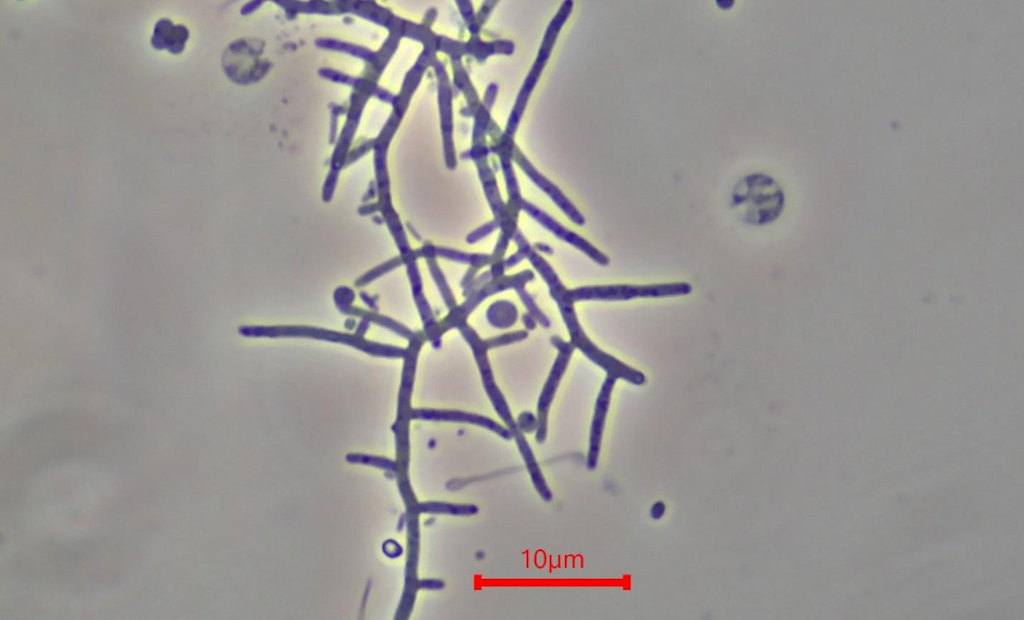Interested in Laboratory?
Get Laboratory articles, news and videos right in your inbox! Sign up now.
Laboratory + Get AlertsHistorically referred to as Nocardia, Gram-positive branched filaments generally ranging from 0.8-1.2 µm in diameter with visible septa (cell walls) are a common contributing factor for bulking and foaming in biological wastewater treatment processes.
In recent years, as DNA testing has become more sophisticated, we have recognized the vast genetic diversity present that may possess Actinomycetes-Mycolata morphology. The common trait shared by these organisms is mycolic acid within their cell walls, which is hydrophobic regardless of its viability (whether it is dead or alive).
Generally, candidates for Actinomycetes-Mycolata morphology appear to be members of the Actinobacteriota or Acidobacterita phyla. Gordonia, formerly known as Nocardia amarae, is a genus recognized to include 50 individual species. Other confirmed genera capable of Actinomycetes-Mycolata morphology include Dietza (four species), Skermania (two species), and Mycobacterium (88 species).
Generally, filamentous morphology is variable within these genera/species and the microorganisms may grow as filaments, single-cell bacteria, or small clusters of bacteria. When comparing traditional microscopy findings to DNA results, other candidates for Actinomycetes-Mycolata morphology include Strenotrophobacter, Tsukamurella, Geothrix, Propioniciclava and a wide variety of reads that are not able to be detected at the genus level. It appears fairly common to see high abundance of Actinomycetes-Mycolata filaments observed through microscopy with no “smoking gun” as the main genera, but rather very high genetic diversity (often related at the family or order taxometry).
Actinomycetes-Mycolata is most commonly correlated to fats, oils, and grease in municipal wastewater treatment systems. Occasionally, these filaments cause true sludge bulking, and other times their hydrophobic nature may be a bigger influence in how their abundance impacts the SVI value of the mixed liquor. Generally, dispersed Actinomycetes-Mycolata filament types are more prone to foaming and it is widely reported that foam trapping on aeration basins may give these filaments a competitive advantage. Foaming is often aesthetic, but may compromise treatment in instances in which a significant portion of the biomass becomes entrapped within the foam or if there is potential for the foam to billow over the aeration basin (generally with assistance of surfactants or possibly at very high bacterial growth rates).
Control strategies
Common control strategies for Actinomycetes-Mycolata filaments in municipal systems include reducing FOG at the source (grease trap ordinances or pretreatment limits for large industry), chlorinating or removing foam on aeration basins, reducing areas of septicity if possible (when septic the FOG becomes more easily obtained by these filaments), and sometimes reducing the SRT value and MLSS concentration. A theory for why reducing the SRT is effective in some plants and not others is that there may be slightly different kinetic growth rates of these filaments depending upon their genetic properties. Note that when temperatures are cold and nitrification is needed, if the SRT is reduced low enough, effluent ammonia concentrations may increase. If the filaments are protruding the floc, selected RAS chlorination is often successful. Coagulants and polymers also often serve as band-aids to improve settling.
In practical experience — and especially in various industrial wastewater treatment systems — it is important to acknowledge that FOG is not the only potential growth cause of Actinomycetes-Mycolata filaments. Many of the recognized genera capable of Actinomycetes-Mycolata morphology may utilize a broad range of substrate and depending upon the competition and various levels of stress within the plant, and occasionally these filaments gain a competitive advantage on other substrates.
For example, in paper mills, chemical refineries and other industries, household FOG is generally not present, however, Actinomycetes-Mycolata filaments are commonly observed. For these reasons it appears most practical to keep in mind that FOG is usually the root cause of these filaments in municipal treatment systems, but that other potential causes remain possible, especially in various industrial wastewater treatment plants.
About the author: Ryan Hennessy is the principal scientist at Ryan Hennessy Wastewater Microbiology. He was trained and mentored by Dr. Michael Richard for over 10 years in wastewater microbiology, and serves as a microbiology services consultant. Hennessy is a licensed wastewater treatment and municipal waterworks operator in the state of Wisconsin and fills in as needed for operations at several facilities. He can be reached at ryan@rhwastewatermicrobiology.com. Hennessy's new book Wastewater Microbiology: Filamentous Bacteria Morphotype Identification Techniques, and Process Control Troubleshooting Strategies is now available on Amazon.






